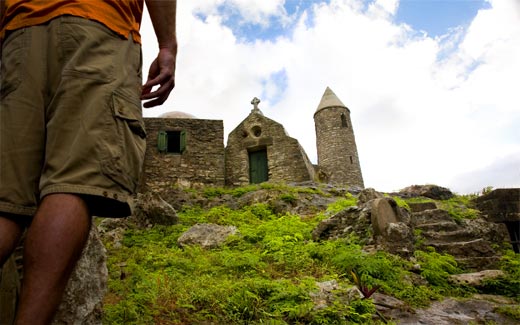
History of The Bahamas Out Islands
The Out Islands of The Bahamas gives new meaning to living history
The rich history of the Out Islands of The Bahamas isn’t just for history books—although you’ll find plenty of it there—it shapes the way the Bahamians live, how they work and especially how they celebrate. From the spot where Christopher Columbus landed on The Bahamas in 1492 to the tales of rum runners and pirates, the history of The Bahamas Out Islands is very much alive!
What makes The Bahamas especially unique is the diverse history of settlers on the island. Like travelers, searching for a different kind of vacation experience, many who chose to live on The Bahamas were seeking a different way of life. Beginning with the Lucayan tribe seeking peaceful refuge on the islands, the English Puritans who sought religious freedom and skilled craftsman and boat makers seeking to make a living from the Atlantic Ocean and Caribbean Sea— they all sought a better way of life.
Not all of the history of The Bahamas is pleasant, however. The majority of residents making up the island are descendants of slaves who arrived on the islands from West Africa. The remains of plantations, slaves’ quarters and a history that The Bahamas are not proud of, is part of the present-day culture. The Out Islands of The Bahamas also celebrates the West African heritage of its residents through rich cultural experiences and celebrations where music, food and dance all are a part of the Bahamian life today.
It’s not by blood or coincidence that so many Bahamas residents on The Exumas have the name Rolle. Following emancipation many of the freed slaves took on the name after Lord Rolle, a wealthy plantation owner who gave his land on Exuma Island to his former slaves.
Famous and infamous names of history all make up the colorful past and present of the Out Islands of Bahamas. Christopher Columbus’ landing on the islands in 1492 gives locals and visitors plenty to talk about. While history shows Columbus landed on San Salvador, there is evidence his first landing actually may have been to Cat Island.
Blackbeard was probably the most infamous pirate to have terrorized the islands of The Bahamas. Because of The Bahamas’ complex geography of islands and cays, The Bahamas was the perfect playground for pirates in the 17th and 18th centuries. Tales of pirate fights and shipwrecks have been recanted through the generations of the island. For tourists, pirates have left behind plenty of shipwrecks and remains that make for popular dive and snorkeling exploration.
After centuries of being a haven for pirates and raiders under English rule, The Bahamas peacefully became an independent nation in 1973 when the citizens elected their first Prime Minister and Parliament. Today, the Governor General of The Bahamas serves as the local representative of the United Kingdom. The Bahamas proudly remains in the Commonwealth and boasts one of the most stable governments in the Caribbean.
Historical influences continue to shape the islands and the culture of The Bahamas. Visitors can hear about the history on the quaint village of New Plymouth on Green Turtle Cay from ancestors of the Revolutionary War loyalists, who settled Abacos Island in 1783.
Bimini Island gets its colorful and eccentric culture naturally. Some say that Spain’s Juan Ponce de Leon sought the Fountain of Youth in Bimini Island in the early 1500s. Bimini Road is said to have remains of the Fountain of Youth and evidence of the lost continent of Atlantis. Divers like to check out the battered concrete hull of the Sapona, which once was a floating nightclub and liquor warehouse, but now rests on a shallow bank.
Ernest Hemingway made his way to The Bahamas settling in on Bimini Island, where he often touted the world-class game fishing. His favorite watering hole and hotel was the Compleat Angler. The establishment had a room dedicated to Hemingway before it burned down.
The tradition of boatbuilding continues on Treasure Cay, a skill brought to the islands from pioneers in 1783 and has been passed down for generations.
The Out Islands of The Bahamas remain today as they have most of their history—sparsely populated, largely undeveloped and naturally wondrous. Not only were many of the Out Islands of The Bahamas remote and uncharted, the deadly native reefs made the navigation treacherous, often resulting in the loss of lives and property. At the same time, the geography has protected much of the Out Islands from commercial development, making the Out Islands of The Bahamas ideal for those who want to experience unspoiled ecosystems and world-class fishing, diving, sailing and pristine beaches.
Bahamas Out Island Packages & Promotions
Be the first to hear about the latest Bahamas Out Island resort packages and offers.
Order your Out Islands Destination Guide
Get all the information you need about the Out Islands. We'll mail it to you right away!
See a page you'd like to save or read later?
Simply click the “Save Page for later” button to save any page and read it later.
New U.S. Passport Regulations
As of January 23, 2007 all U.S. citizens are required to carry valid U.S. passports when traveling to and from The Bahamas.


